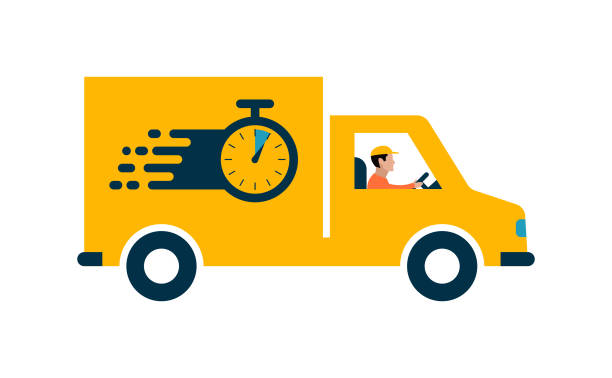国际快件追踪警示:6 个扼杀效率的错误
国际货运跟踪 不再是可有可无,而是全球物流客户满意度的核心。国际航运发展迅速,但客户希望它发展得更快,不会出现意外。如果警报、ETA 和异常处理管理不善,成本就会上升,信任度也会降低。本指南强调了降低效率的六种常见错误,并提供了改善运营的实用解决方案。对于寻求结构化方法的团队,可使用以下平台 邮政包裹 提供正确的基础。

1.错误:将跟踪数据视为简单信息
为什么会受伤
跟踪事件不仅仅是状态更新,更是业务信号。忽视它们会导致错过警告信号、延迟响应以及更多的 "我的订单在哪里?这会削弱 国际货运跟踪 和客户的信心。
如何修复
- 将状态变化转化为直接触发器,如创建支持票据或发送主动警报。
- 将更新内容导入共享通信渠道,实现实时可见性。
- 为每种事件类型分配明确的所有权,并规定响应时间。
2.错误:手工输入数据和系统分散
为什么会受伤
将跟踪数字复制到电子表格或互不关联的工具中会导致反应缓慢和错误。不同的团队往往查看不同的数据,造成盲点和不一致。这不仅会延误问题的解决,还会造成损失 国际货运跟踪 业绩

如何修复
- 将承运商的信息传送整合到一个记录系统中。
- 使用集成或网络钩子在订单和支持系统之间推送实时数据。
- 规范事件代码,使所有承运商使用相同的语言。
3.错误:忽视时区、语言和当地规范
为什么会受伤
买家分布在多个时区和地区。在错误的当地时间或以单一语言发送的警报会降低清晰度。客户会错失交付机会,混乱加剧,从而增加支持请求。
如何修复
- 根据买方当地时区调整交货窗口。
- 将警报翻译成当地语言。
- 添加特定承运商的详细信息,如周末送货规则或联系信息。
4.错误:例外情况和海关处理不力
为什么会受伤
需要立即关注 "海关扣留 "或 "地址问题 "等事件。如果没有明确的工作流程,这些情况就会堆积起来,产生存储成本,并使客户感到沮丧。异常处理不当会直接损害 国际货运跟踪 指标。

如何修复
- 针对常见的异常情况(如地址不正确或文件丢失)建立清晰的流程。
- 设定限时解决的目标,防止延误。
- 跟踪解决时间,提高未来性能。
5.错误:使用不能反映现实的静态预计到达时间
为什么会受伤
一个固定的交货日期很少能与实际的跨境运输条件相匹配。天气、海关检查和运输延误很快就会使 预计到达时间 不准确。如果买家看不到更新,信任度就会下降,他们就会求助于支持团队。
如何修复
- 在每个重要里程碑之后重新计算 ETA。
- 提出交货窗口,而不是单一日期,并随着确定性的增加而细化。
- 通过解释 ETA 发生变化的原因来增加透明度。
6.错误:忽略跟踪页面
为什么会受伤
跟踪页面是客户获取最新信息的主要途径。如果页面加载速度慢、细节少或不提供自助服务选项,客户就会放弃该页面并提出支持请求。一个薄弱的跟踪页面会浪费向买家提供信息和保证的机会。

如何修复
- 创建清晰的装运时间线,并配有可见的图标和时间戳。
- 将下一个预期步骤和 ETA 放在页面顶部。
- 启用自助服务操作,如地址更正或重新安排交付时间。
- 针对移动用户进行优化,确保快速加载。
良好的国际快件跟踪
运行良好的系统将跟踪视为一个动态的、以客户为中心的过程。主要功能包括
- 具有规范化载波数据的单一真实来源。
- 通过有意义的事件触发自动警报。
- 根据买方的时区和语言进行本地化沟通。
- 定期更新预计到达时间,并提供透明的解释。
- 反应灵敏、易于使用的跟踪页面,提供自助服务选项。
监测的基本指标
改进 国际货运跟踪 要求取得可衡量的成果。重点关注
- WISMO 率:产生跟踪查询的订单百分比。
- 例外情况解决时间:解决海关或地址错误等问题所需的小时数。
- 准时交货 差异:预计和实际预计到达时间之间的误差。

- 跟踪页面参与情况:跳出率、加载时间和页面停留时间。
- 采用自助服务:在没有人工支持的情况下解决交付问题的百分比。
货运可见性差对成本的影响
跟踪不及时或不明确不仅会损害客户体验,还会给企业造成直接的经济损失。它给企业造成了直接的经济损失。
- 交付失败会导致仓储费和重新交付费。
- 不明确的更新促使客户要求退款。
- WISMO 门票上涨要求增加工作人员的工作时间。
更好 国际货运跟踪 降低隐性成本。对实时可视性进行投资的公司往往能减少投诉,降低物流成本。
通过透明度建立信任
客户需要清晰、真实的最新信息。如果他们知道发生了什么,他们就会接受延迟。

- 实时跟踪可以增强客户的信心,因为客户可以看到货物的每一个环节。清晰的可视性使他们确信订单正在按承诺进行。
- 对海关延误的解释可为买家提供背景信息,从而减少挫折感。当买家了解包裹被扣留的原因时,他们会更有耐心,也更少提出投诉。
- 持续更新可鼓励重复购买,因为购买者会感到自己了解情况并受到重视。定期沟通显示了可靠性,并增强了对品牌的长期信任。
透明度可将负面体验转化为忠诚度。可靠 国际货运跟踪 让客户了解情况并放心。
国际货运追踪的未来趋势
跟踪正从被动式转向预测式。现在,公司利用数据在问题发生之前进行预测。
- 人工智能工具现在可以预测以下因素造成的交付风险 天气交通或边境延误。通过分析实时数据,它们可以及早向公司发出警告,并帮助防止中断。
- 分析功能通过研究航道历史、季节性模式和承运商表现来提高 ETA 准确性。随着时间的推移,每次货运预测都会变得更加准确可靠。
- 自动预警将预测转化为行动。它们能在客户发现问题之前通知团队,让企业有时间解决延迟问题或调整交付承诺。
未来的 国际货运跟踪 是积极主动的。采用预测工具的企业将为速度、信任度和可靠性设定更高的标准。
结论
上述六大错误--被动使用数据、手动输入、缺乏本地化、异常处理不力、静态 ETA 和薄弱的跟踪页面--是导致效率低下的主要原因。通过解决这些问题,团队可以降低成本,建立更强的客户信任。强大 国际货运跟踪 这需要主动信号、动态 ETA、本地化沟通和以客户为中心的设计。准备升级的企业可以依靠 邮政包裹 以简化他们的运营,实现更快、更可靠的交付可视性。
行业洞察
收件箱消息
Nulla turp dis cursus.整体释放,预留空间







